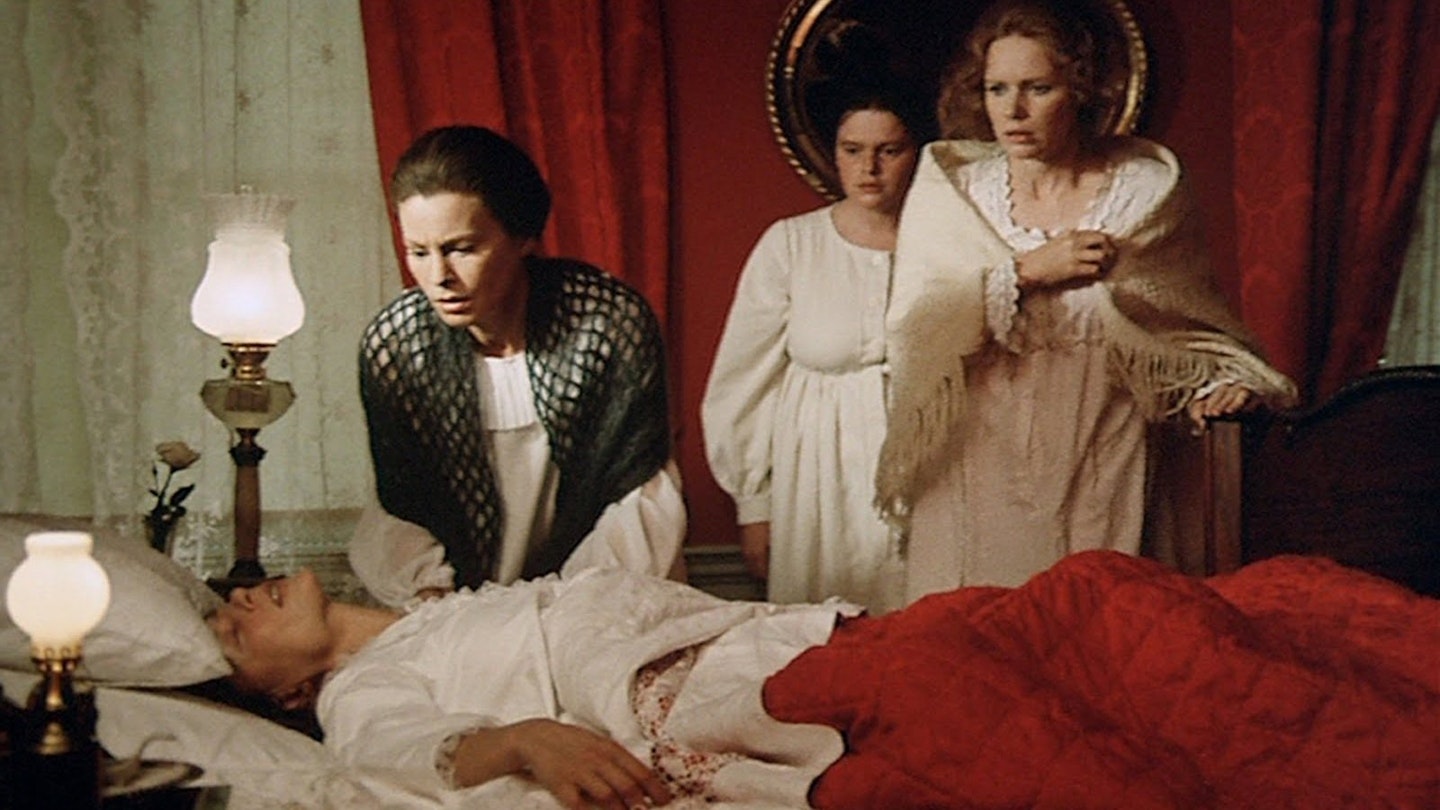Having fallen from critical and commercial favour in the early 1970s, Ingmar Bergman struggled to raise the $400,000 needed for this intense study of the pain of solitude, disappointment, godlessness and death. However, both his star trio and cinematographer Sven Nykvist agreed to defer payment until a distribution deal had been secured and the film proved to be a significant success. Indeed, in addition to being nominated for five Academy Awards, it also went some way to re-establishing a reputation undeservedly tarnished by The Rite and The Touch.
Bergman later revealed that all three sisters represented facets of his mother's personality, with Agnes being principled but ineffectual, Karin aloof and egotistical, and Maria cold and testy. Yet, by confining them within the stifling mansion, he also suggested that they were part of the same soul - a concept engendered by Bergman's childhood conviction that the soul was a red monster whose insides were hideously membranous.
Red is, indeed, the feature's dominant colour, with the oppressive décor being reinforced by the bloodiness of Karin's hands and lips after she mutilates her labia before her incomprehending husband Fredrik (Georg Arlin) and the stomach wound Maria's spouse Joakim (Henning Moritzen) inflicts upon himself at the dining table, while his wife looks on with contemptuous indifference.
Yet, Bergman had also been inspired by a more recent vision of three women in white whispering together in a red room - hence the concluding image of the sisters sat together on the garden swing, as Anna reads Agnes's journal and imagines her to be at peace. Indeed, it's fitting that the maid should be permitted this reverie, as she alone had shown her mistress any real pity, as she cradled her in a conscious evocation of the Pièta on the night when she appeared to rise temporarily from the dead in a last desperate bid to bring Karin and Maria together.
